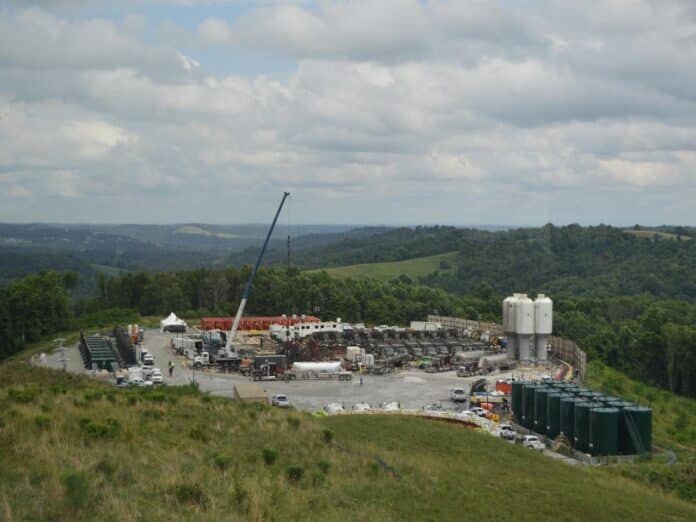Fractures in the Earth’s subsurface play an important role in our energy systems, from providing pathways to extract fossil fuel from deep underground rock to supporting emerging green technologies such as carbon storage and enhanced geothermal heat. However, predicting the properties of these fractures requires more work.
A new method developed by a team of scientists led by Penn State could provide better physical insight into fractures as they open and close in real-time.
Tieyuan Zhu, associate professor of geosciences at Penn State, said, “Fracture dynamics is a long-standing question in seismology, and how fractures open and close is critical for understanding this, We developed a new technique that extracts real-time information of fracture evolution, and this image can give us better physical insight than we have had.”
The researchers used data from seismic sensor arrays installed in wells near a hydrofracturing, or fracking, site in Wyoming.
Fracking is injecting high-pressure water underground to open cracks and create flow paths, commonly used to extract oil and natural gas trapped in rock.
Pressure sensor arrays placed close to wells get a seismic signal from one array that passes through the rock-like sound waves.
The instruments capture baseline and follow-up data that can demonstrate changes in seismic velocity brought on by fracking.
Zhu said, “When you open a fracture, that will reduce the seismic speed. Originally, you have one piece of rock, but when you open a fracture, you have created a pore space. You have something filling that space, like water or air that will reduce the speed and make your waves a little bit slower.”
The new analytical method allowed researchers to see changes in the subsurface with greater spatiotemporal resolution than previous seismic methods used to characterize fractures.
It indicates a clear link between changes in the seismic velocity recorded by the arrays and physical changes in the rock.
He said. “The motivation for this study was to see if we could use this seismic data to distinguish when the fractures open and close. We found that our algorithm really can improve the resolution of what I call this image. And with this better image, we can understand fracture dynamics better.”
The scientists observed a small velocity near the start of the fracking process as the pressure increased and fractures likely formed in the rock. However, after filling the fractures with fracking fluid, they unexpectedly observed a larger velocity reduction.
The scientists determined that the larger drop was most likely caused by gas bubbles trapped in a bioremediation agent added near the end of the fracking process.
Researcher said. “A lot of people said when you open a fracture, you probably see a very big velocity change, and then when you close it, you’ll see a velocity recovery. But we see that when you open the fracture, it causes a smaller change than expected. Then some larger, significant velocity reduction is caused by the gas bubbles.”
The method could one day be used to provide early warning signs of potential carbon dioxide plume leakage from carbon sequestration projects, or it could be used to increase water flow between injection and production wells in enhanced geothermal systems.
He said, “Penn State has lots of capabilities to do lab experiments with fractures – we have great researchers here. Our work is really looking at the field scale. There is a big gap between the lab and field, and I think our work here helps fill that gap.”
The National Energy Technology Laboratory of the United States Department of Energy funded this study.
Journal Reference:
- Liu, X., Zhu, Ajo Franklin, et al. Understanding Subsurface Fracture Evolution Dynamics Using Time-Lapse Full Waveform Inversion of Continuous Active-Source Seismic Monitoring Data. Geophysical Research Letters. DOI: 10.1029/2022GL101739
